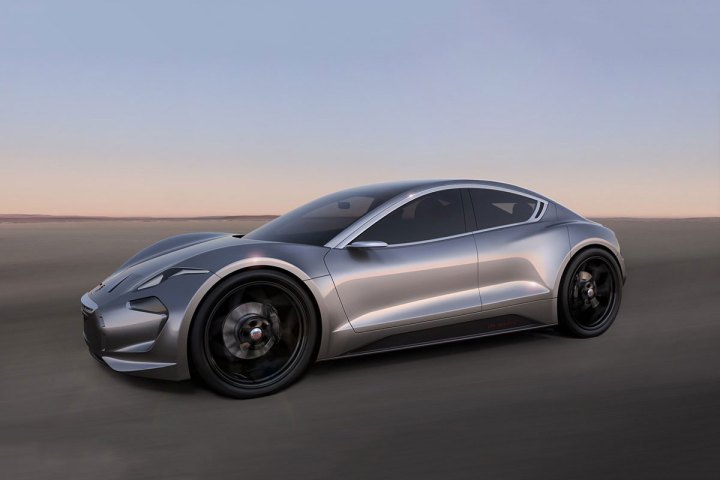
The new solid-state batteries will be 2.5 times more energy dense than the batteries used in current electric cars, Fisker claims. That means they can store more electricity in a given volume than other designs. This will allow for a range of up to 500 miles per charge. The company also claims these batteries could be recharged in as little as one minute.
Fisker isn’t the first company to claim that solid-state batteries will be a massive improvement over current lithium-ion batteries. Sakti3, the solid-state battery startup that was bought by Dyson in 2015, made similar claims about energy density. Dyson is now developing its own electric car, while one of Sakti3’s co-founders is now on Fisker’s battery development team, according to Autoblog. Toyota is also developing solid-state batteries for its own long-range electric car.
While conventional batteries use a liquid electrolyte, solid-state batteries use a solid material, hence the name. This solid electrolyte is supposed to be the key to the batteries’ higher performance and, unlike the electrolyte used in conventional batteries, it isn’t flammable. But so far, no company has managed to put solid-state batteries in a mass-production electric car.
Like the battery technology it’s developing, Fisker itself is promising a lot, but hasn’t delivered anything. After leaving his first car company (which was later reorganized as Karma Automotive) Henrik Fisker started Fisker Inc. to develop long-range electric cars. The company’s first car, the EMotion, won’t use solid-state batteries, but it will have a range of more than 400 miles, according to Fisker.
A nearly production ready version of the EMotion will be displayed at CES 2018, but production won’t start until 2019. Fisker is currently taking $2,000 deposits for the car, which will have a list price of around $130,000. But starting a car company isn’t easy, and there is no guarantee Fisker will last long enough to get the EMotion into production, let alone build its vaunted solid-state batteries.
Editors' Recommendations
- 900 miles on a charge? How Toyota’s solid-state battery tech could revolutionize EVs
- New battery design could mean EVs charge in only 10 minutes
- Toyota pushes ahead with solid-state batteries for future electric cars


